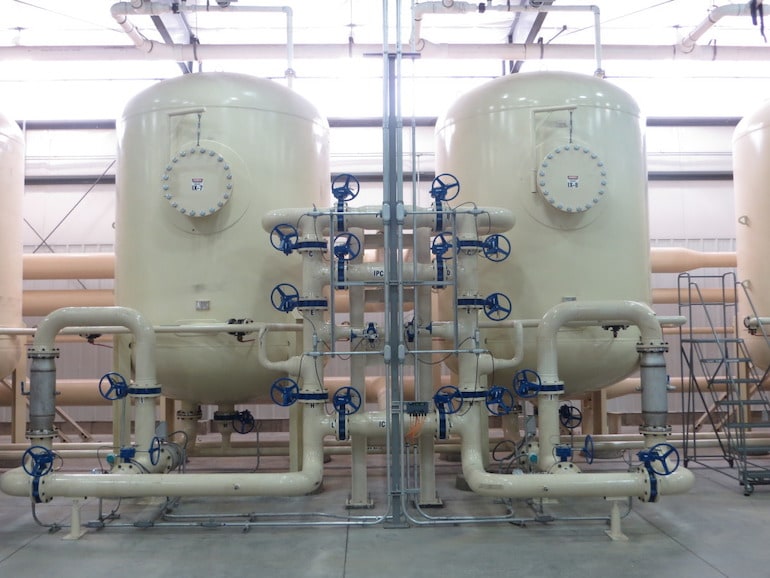Ur-Energy Ramps Up Lost Creek and Advances Shirley Basin Projects in a Strengthening U.S Uranium Market

Ur-Energy is a growing, low-cost U.S. uranium miner set to benefit from strong fundamentals and growing policy support for nuclear power in a decarbonizing world.
- Ur-Energy is a US-based uranium producer ramping up production at its Lost Creek mine. It is also building a second mine called Shirley Basin, which will increase total licensed production capacity from 1.2M to 2.2M lbs/year by late 2025 or early 2026.
- Lost Creek production is increasing quarter-over-quarter but the ramp-up has been slower than desired due to challenges hiring experienced staff and drill rig operators. However, progress is being made on overcoming these issues.
- The company is well-funded with $110M cash, $33M of revenues in Q4 2022, and no debt.
- Ur-Energy is focused on signing long-term contracts with U.S. utilities at increasingly higher prices. About 50% of production over the next 6 years is uncontracted, providing significant contracting upside. Domestic U.S. uranium is in very short supply.
- The Trump administration is expected to be more mining-friendly and reduce regulatory red tape compared to Democrats, though nuclear power has strong bipartisan support.
Poised to Benefit from Robust Uranium Market Fundamentals
Uranium mining in the United States is experiencing a renaissance, driven by strong fundamentals and growing policy support for nuclear power. One company well-positioned to capitalize on this opportunity is Ur-Energy (NYSE: URG | TSX:URE), an established U.S. uranium producer with ambitious growth plans.
Ur-Energy owns and operates the Lost Creek in-situ recovery (ISR) uranium facility in south-central Wyoming. After beginning operations in 2013, Lost Creek is now being ramped up to its licensed capacity of 1.2 million pounds of U3O8 per year. The company is also constructing a second mine called Shirley Basin, and together, the two mines will increase Ur-Energy's annual production capacity to 2.2 million pounds.
"As we bring on Shirley Basin in the late 2025 early '26 time frame, we'll actually take our production capacity up to 2.2 million pounds per year," said Ur-Energy CEO John Cash in an exclusive interview. "Shirley Basin - great story there. Construction there is on schedule and we're looking at bringing it online late next year, very early '26."
Overcoming Ramp-Up Challenges
While Ur-Energy's Lost Creek mine is steadily increasing output, the production ramp-up has admittedly been slower than management would like. The main challenges have been hiring experienced personnel and securing drill rigs and operators. However, Cash emphasizes that good progress is being made on these fronts.
"We've mopped up pretty much everybody that has any experience in the industry and they're working for us now here in the U.S.," Cash explained. "As far as bringing any other people in back into the industry, I think we're pretty well done with that. There are no other people to hire and bring back-in, or maybe very limited onesies and twosies here and there."
Ur-Energy revised its production guidance to approximately 260,000 pounds. The company already has contracts in place to sell 740,000 pounds in 2025, which it intends to fulfill through production and other options. Notably, Ur-Energy is well-funded to support its growth initiatives, with $110 million of cash, $33 million of expected revenues in Q4 2024, and no debt.
Interview with CEO John Cash
Contracting Strategy and Market Outlook
Ur-Energy's go-forward strategy centers around signing long-term uranium supply contracts with U.S. nuclear utilities at progressively higher prices. The company's current contract book extends to 2033, with ~50% of its licensed production capacity over the next 6 years contracted.
The uncontracted portion provides significant upside exposure to further price appreciation in the uranium market. Importantly, domestic U.S. uranium production is in very short supply, with only a handful of companies like Ur-Energy working to increase output. This dynamic is expected to lead to premium pricing for U.S.-origin uranium.
"Our contract book is really strong and so we continue to see RFPs coming in from utilities," Cash noted. "We respond to those as is appropriate with higher and higher pricing as the long-term market has stayed really strong. So our cost of production right now is not where we want it to be because we're not ramped up, but as we continue to ramp up and as we reach those economies of scale, we're going to have a very nice margin between our production cost and our contract price, especially as we begin to move through time, we begin to come into those higher and higher price contracts."
Positive Political Backdrop
The Republican victory in the recent U.S. elections is seen as a positive development for domestic uranium miners like Ur-Energy. The Trump administration is expected to pursue policies that are supportive of the mining industry and work to streamline cumbersome regulations.
"President Trump in his first term, he put uranium on the critical minerals list, which gave some advantages to permitting timelines that were meaningful," Cash pointed out. "I hope, I would expect, that President Trump would put uranium back on the critical minerals list, and that could be beneficial to us as we permit projects going forward, not just for us but any uranium company in the U.S."
More broadly, Republicans and Democrats alike have expressed strong support for nuclear energy as a critical tool to combat climate change and enhance energy security. This bipartisan backing is constructive for the long-term health of the uranium industry.
As Cash put it: "I think in that regard there's probably not a lot of daylight between the Republican and the Democrat parties. They're pretty similar on their stance."
Conclusion
The outlook is bright for Ur-Energy and the uranium industry as a whole. Robust demand growth driven by a global nuclear renaissance, coupled with constrained supply resulting from years of underinvestment, has set the stage for materially higher uranium prices over the next decade. As an emerging U.S. producer with 2.2 million pounds per year of licensed capacity, an attractive portfolio of long-term contracts with significant uncommitted volumes, and a supportive political and regulatory backdrop, Ur-Energy appears well-positioned to deliver outsized returns in a strengthening uranium market.
The Investment Thesis for Ur-Energy
In summary, the investment thesis for Ur-Energy is compelling:
- Well-positioned, growing U.S. uranium producer with 2.2M lbs/year of licensed production capacity
- Significant uncontracted uranium production provides exposure to higher future prices
- U.S. uranium supplies are tightly constrained, implying pricing power for domestic producers
- Strong bipartisan political support for nuclear power and uranium mining
- Solid balance sheet with $110M of cash and no debt to fund growth initiatives
The Big Picture for Uranium: Macro Thesis Analysis
Taking a step back, the uranium market's future looks bright amid a growing global push to decarbonize power generation and improve energy security. Nuclear power is increasingly being embraced by policymakers as a reliable, carbon-free source of electricity that is available 24/7. Moreover, Russia's invasion of Ukraine has heightened the focus on energy independence and the geopolitical risks of relying on imported fuel supplies.
These forces are driving a resurgence of nuclear power around the world, with many countries announcing plans to restart idled reactors, extend the lives of existing facilities, and build new plants. Indeed, the International Atomic Energy Agency (IAEA) recently projected that global nuclear generating capacity could double by 2050 under its high case scenario.
Of course, new nuclear power plants require uranium fuel, and lots of it. Over the past decade, persistently low uranium prices have severely constrained mining activity, leading to a growing deficit between worldwide production and reactor requirements. With demand poised to increase considerably in the coming years and a lack of significant new mines in development, the table appears set for a strong and sustained recovery of uranium prices.
As Ur-Energy CEO John Cash summed it up: "We're seeing a bigger and bigger gap between supply and demand, and now it is a seller's market. The sellers, the mining companies are really driving the discussion."
For investors, the uranium sector offers a compelling way to play the global energy transition and a world that is increasingly looking to nuclear as a solution to the twin challenges of climate change and energy security. Companies like Ur-Energy - which are established producers in stable jurisdictions with strong growth prospects - are well-placed to benefit from a rising uranium price environment in the years ahead.
Analyst's Notes




Subscribe to Our Channel
Stay Informed












































